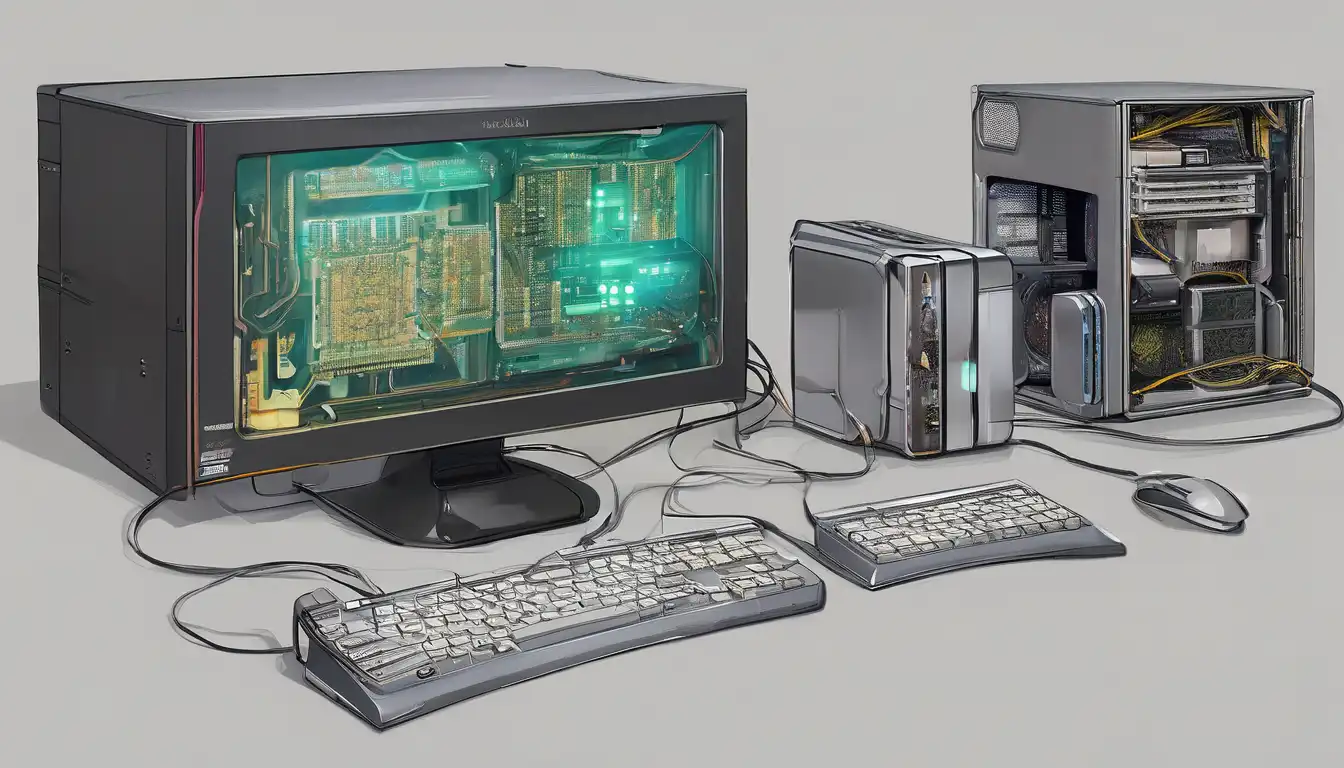Revolutionary Advances in Computer Hardware Technology
The landscape of computer hardware technology is undergoing unprecedented transformation, with innovations emerging at an accelerated pace. From quantum computing breakthroughs to AI-optimized processors, the latest developments are reshaping how we interact with technology. These advancements promise not only enhanced performance but also greater energy efficiency and accessibility for users worldwide.
Next-Generation Processors and Computing Power
The processor market has seen remarkable innovations, particularly with the introduction of 3D stacking technology and chiplet architectures. Major manufacturers like Intel, AMD, and Apple are pushing boundaries with processors that offer unprecedented performance per watt. The latest chips feature advanced manufacturing processes down to 3nm and beyond, enabling higher transistor density and improved thermal management.
Artificial intelligence integration has become a cornerstone of modern processor design. Dedicated AI accelerators are now standard in many CPUs and GPUs, enabling real-time machine learning applications and enhanced computational photography. These innovations are particularly evident in the gaming and creative professional sectors, where hardware demands continue to escalate.
Graphics Card Evolution and Real-Time Rendering
Graphics processing units have evolved beyond traditional rendering tasks to become versatile computational engines. The latest GPUs feature ray tracing acceleration, AI-powered upscaling technologies like DLSS and FSR, and massive memory bandwidth improvements. These advancements enable photorealistic gaming experiences and accelerate professional workflows in video editing, 3D modeling, and scientific visualization.
Memory technology has also seen significant upgrades, with GDDR6X and HBM3 architectures delivering unprecedented data transfer rates. The integration of hardware-accelerated ray tracing and AI denoising has revolutionized real-time graphics, making previously impossible visual fidelity achievable in consumer-grade hardware.
Storage Technology Breakthroughs
Solid-state storage continues its rapid evolution, with PCIe 5.0 SSDs offering read/write speeds exceeding 12,000 MB/s. The adoption of QLC and PLC NAND flash technology has dramatically increased storage density while reducing costs. These advancements make high-capacity, high-performance storage accessible to mainstream users.
Emerging technologies like computational storage and storage-class memory are blurring the lines between memory and storage hierarchies. These innovations promise to eliminate traditional storage bottlenecks, enabling new applications in big data analytics and real-time processing. The durability and reliability of modern SSDs have also improved significantly, with endurance ratings reaching multiple petabytes of written data.
Memory Architecture Innovations
DDR5 memory technology has brought substantial improvements in bandwidth and power efficiency compared to previous generations. With data rates exceeding 6400 MT/s and onboard power management, DDR5 enables higher performance while reducing system power consumption. The technology's error correction capabilities and increased channel efficiency make it ideal for both consumer and enterprise applications.
Advanced memory technologies like HBM3 and GDDR7 are pushing the boundaries of what's possible in high-performance computing. These memory architectures feature stacked die configurations and ultra-wide memory interfaces, delivering bandwidth measured in terabytes per second. Such capabilities are essential for AI training, scientific simulation, and advanced graphics applications.
Cooling and Thermal Management Solutions
As component power densities increase, innovative cooling solutions have become critical. Liquid cooling systems have evolved from exotic enthusiast options to mainstream solutions, with all-in-one coolers offering exceptional thermal performance. Advanced phase-change materials and vapor chamber technology provide efficient heat dissipation for high-performance components.
Active cooling solutions now incorporate intelligent fan control algorithms and hybrid cooling approaches. These systems dynamically adjust cooling performance based on workload demands, optimizing both thermal performance and acoustic characteristics. The integration of temperature sensors throughout components enables precise thermal management, extending hardware lifespan and maintaining optimal performance.
Connectivity and Interface Standards
The latest connectivity standards are transforming how devices communicate and transfer data. USB4 and Thunderbolt 4 offer 40Gbps bandwidth with universal compatibility, while PCIe 5.0 doubles the bandwidth of previous generations. These advancements enable faster external storage, higher-resolution displays, and more responsive peripheral devices.
Wireless connectivity has seen similar advancements, with Wi-Fi 6E and upcoming Wi-Fi 7 standards delivering multi-gigabit speeds with reduced latency. Bluetooth 5.3 improves power efficiency and connection stability for peripheral devices. These connectivity improvements are essential for the growing ecosystem of IoT devices and wireless peripherals.
Power Supply and Energy Efficiency
Modern power supply units feature advanced digital control systems and higher efficiency ratings. The latest ATX 3.0 standard introduces support for high-power graphics cards with native 12VHPWR connectors. These power supplies offer improved transient response and better voltage regulation under dynamic loads.
Energy efficiency has become a primary focus across all hardware categories. Components are designed with advanced power management features that dynamically adjust power consumption based on workload requirements. These innovations not only reduce electricity costs but also minimize environmental impact through lower carbon emissions.
Form Factor and Miniaturization Trends
The trend toward smaller, more efficient form factors continues with innovations in mini-ITX and micro-ATX designs. These compact systems offer desktop-level performance in significantly smaller packages, enabled by more efficient component layouts and advanced thermal solutions. The development of system-on-chip designs has further accelerated this trend.
Mobile computing benefits from these miniaturization efforts, with laptops and tablets featuring performance previously available only in desktop systems. The integration of multiple components into single packages reduces physical size while improving inter-component communication efficiency. These advancements make high-performance computing more portable and accessible than ever before.
Future Outlook and Emerging Technologies
The future of computer hardware promises even more dramatic innovations. Quantum computing research continues to advance, with practical applications becoming increasingly feasible. Photonic computing and neuromorphic architectures represent alternative computing paradigms that could revolutionize performance and efficiency.
Materials science breakthroughs, including graphene and other 2D materials, offer potential for even smaller, more efficient transistors. The integration of AI throughout hardware design processes promises to accelerate innovation cycles and optimize performance characteristics. As these technologies mature, they will enable new applications and computing experiences beyond current imagination.
The rapid pace of innovation in computer hardware technology shows no signs of slowing. Each breakthrough builds upon previous advancements, creating a virtuous cycle of improvement that benefits consumers, businesses, and researchers alike. Staying informed about these developments is essential for making educated purchasing decisions and understanding the technological landscape shaping our digital future.
